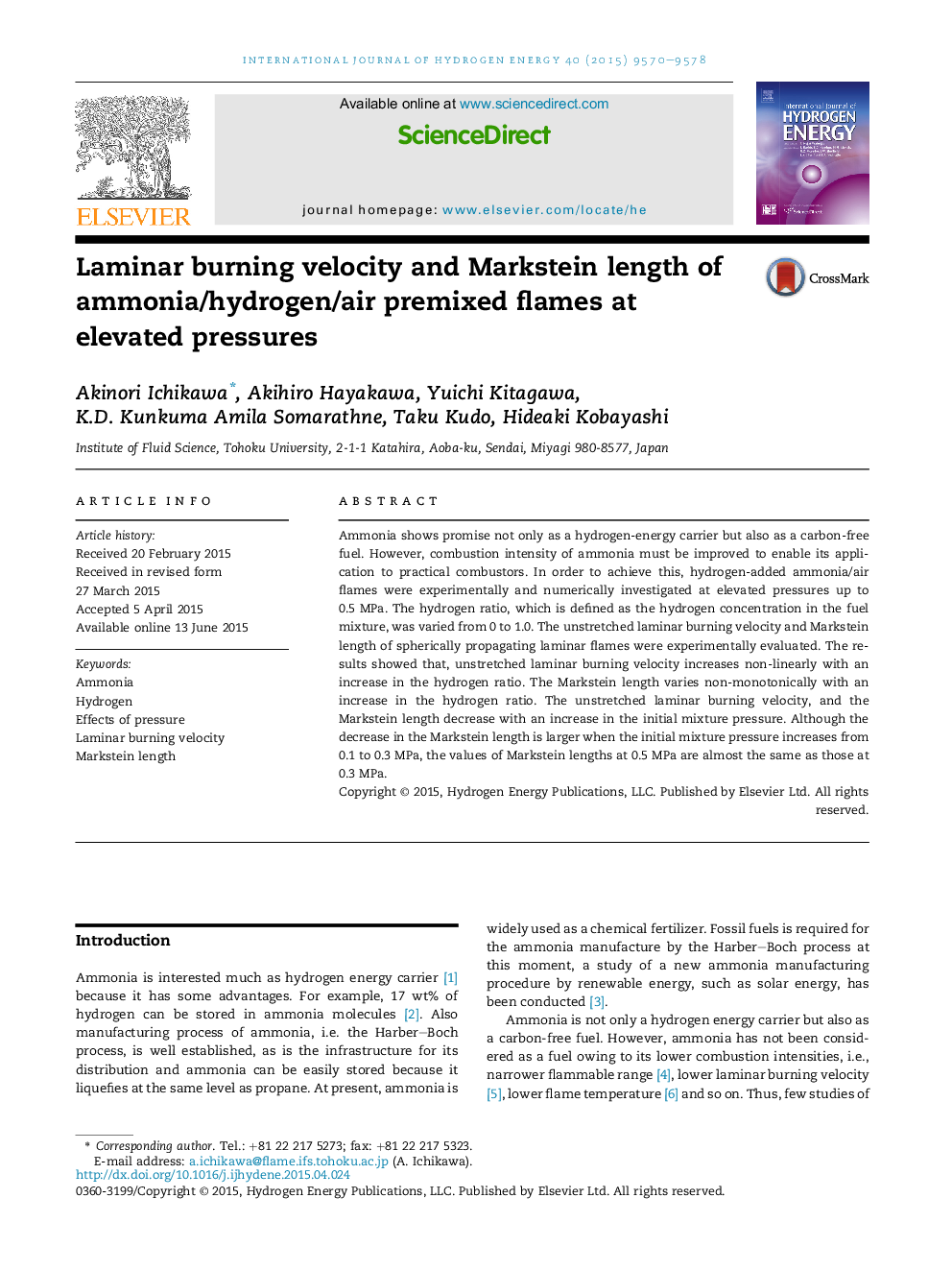| Article ID | Journal | Published Year | Pages | File Type |
|---|---|---|---|---|
| 7715357 | International Journal of Hydrogen Energy | 2015 | 9 Pages |
Abstract
Ammonia shows promise not only as a hydrogen-energy carrier but also as a carbon-free fuel. However, combustion intensity of ammonia must be improved to enable its application to practical combustors. In order to achieve this, hydrogen-added ammonia/air flames were experimentally and numerically investigated at elevated pressures up to 0.5Â MPa. The hydrogen ratio, which is defined as the hydrogen concentration in the fuel mixture, was varied from 0 to 1.0. The unstretched laminar burning velocity and Markstein length of spherically propagating laminar flames were experimentally evaluated. The results showed that, unstretched laminar burning velocity increases non-linearly with an increase in the hydrogen ratio. The Markstein length varies non-monotonically with an increase in the hydrogen ratio. The unstretched laminar burning velocity, and the Markstein length decrease with an increase in the initial mixture pressure. Although the decrease in the Markstein length is larger when the initial mixture pressure increases from 0.1 to 0.3Â MPa, the values of Markstein lengths at 0.5Â MPa are almost the same as those at 0.3Â MPa.
Related Topics
Physical Sciences and Engineering
Chemistry
Electrochemistry
Authors
Akinori Ichikawa, Akihiro Hayakawa, Yuichi Kitagawa, K.D. Kunkuma Amila Somarathne, Taku Kudo, Hideaki Kobayashi,
